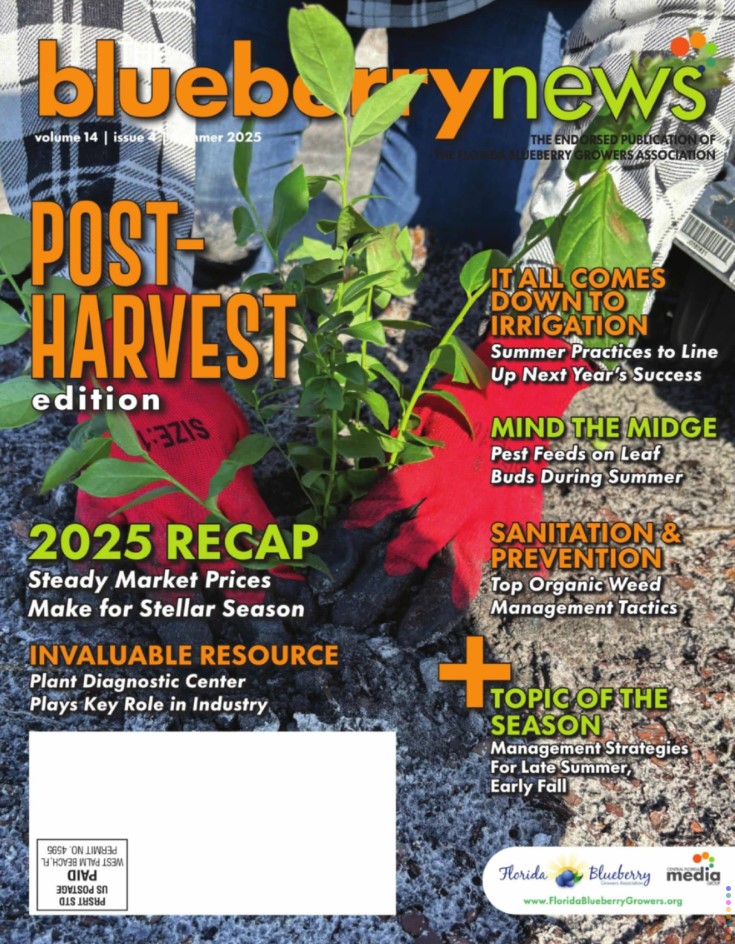Weed management can be a significant problem for organic blueberry production. The key practices are sanitation and prevention. These practices prevent weed seed from entering the soil profile and becoming problematic. Sanitation practices include cleaning weed seed off equipment between fields, maintaining field edges, and using weedfree plant material. If weeds begin to emerge in the field; use the methods below to prevent the weeds from producing seeds and create a growing problem.
- Home
- About Us
- Hall of Fame
- UF/IFAS Blueberry Extension
- Blueberry Fans
- Grower
- Contact Us





